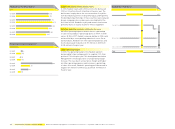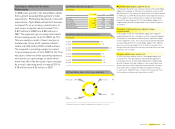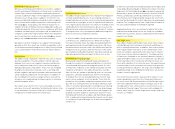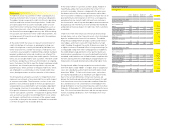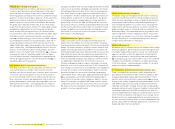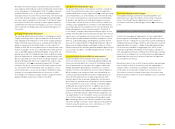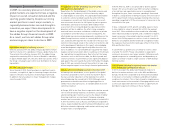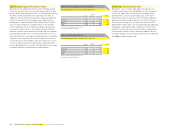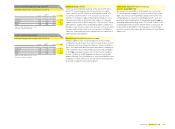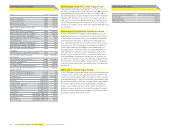Reebok 2008 Annual Report Download - page 118
Download and view the complete annual report
Please find page 118 of the 2008 Reebok annual report below. You can navigate through the pages in the report by either clicking on the pages listed below, or by using the keyword search tool below to find specific information within the annual report.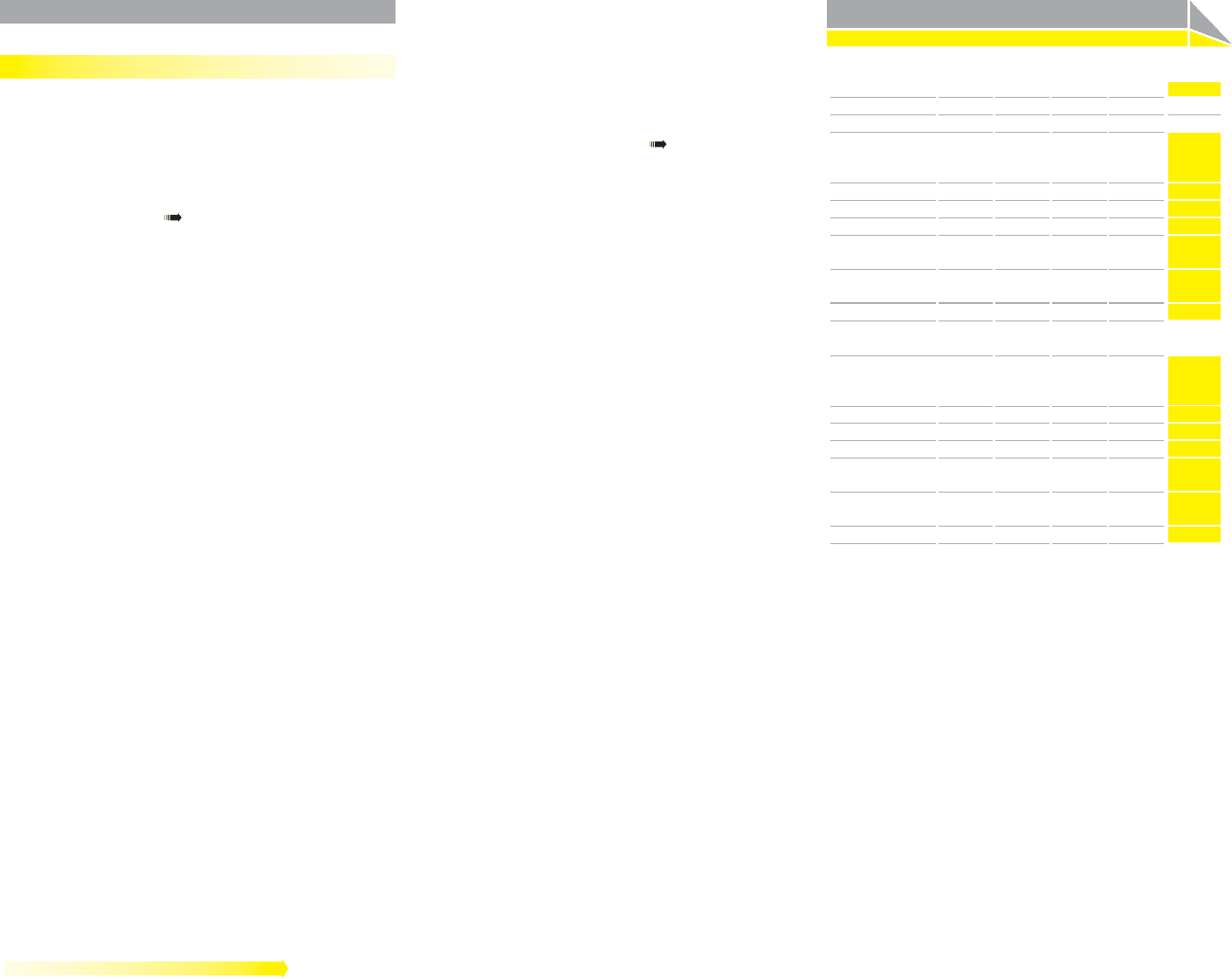
114 Group Management Report – Our Financial Year Risk and Opportunity Report
Future cash outfl ows
€ in millions
Up to
1 year
Between 1
and 3 years
Between 3
and 5 years
After
5 years
Total
As at December 31, 2008
Bank borrowings
incl. commercial
paper 748 — — — 748
Private placements 462 539 374 261 1,636
Convertible bond 408 — — — 408
Accounts payable 1,218 — — — 1,218
Other fi nancial
liabilities 25 1 — 2 28
Derivative fi nancial
liabilities 57 15 6 2 80
Total 2,918 555 380 265 4,118
As at December 31, 2007
Bank borrowings
incl. commercial
paper 198 — — — 198
Private placements 254 684 435 461 1,834
Convertible bond 10 408 — — 418
Accounts payable 849 — — — 849
Other fi nancial
liabilities 16 1 1 2 20
Derivative fi nancial
liabilities 88 62 8 2 160
Total 1,415 1,155 444 465 3,479
Financial Risks
Credit risks
A credit risk arises if a customer or other counterparty to a
fi nancial instrument fails to meet its contractual obligations.
The adidas Group is exposed to credit risk from its operating
activities and from certain fi nancing activities. Credit risks
arise principally from accounts receivable and to a lesser
extent from other contractual fi nancial obligations such as
other fi nancial assets, short-term bank deposits and deriva-
tive fi nancial instruments see Note 23, p. 182. Without taking
into account any collateral or other credit enhancements, the
carrying amount of fi nancial assets represents the maximum
exposure to credit risk.
At the end of 2008, there was no relevant concentration of
credit risk by type of customer or geography. Instead, our
credit risk exposure is mainly infl uenced by individual cus-
tomer characteristics. Under the Group’s credit policy, new
customers are analysed for creditworthiness before standard
payment and delivery terms and conditions are offered. This
review utilises external ratings from credit agencies. Purchase
limits are also established for each customer. Then both credit-
worthiness and purchase limits are monitored on an ongoing
basis. Customers that fail to meet the Group’s minimum credit-
worthiness are allowed to purchase products only on a pre-
payment basis. Other activities to mitigate credit risks, which
are employed on a selective basis only, include credit insur-
ances, bank guarantees as well as retention of title clauses.
The Group utilises allowance accounts for impairments that
represent our estimate of incurred credit losses with respect
to accounts receivable. The allowance consists of two com-
ponents: (1) an allowance based on historical experience of
unexpected losses established for all receivables dependent
on the ageing structure of receivables past due date, and
(2) a specifi c allowance that relates to individually assessed
risk for each specifi c customer – irrespective of ageing. Allow-
ance accounts are used to record impairment losses unless
our Group is satisfi ed that no recovery of the amount owed
is possible; at that point the amount considered irrecoverable
is written off against the receivable directly.
At the end of 2008, no customer at either adidas, Reebok or
TaylorMade-adidas Golf accounted for more than 10% of
accounts receivable. However, compared to the prior year,
the deterioration of the economic environment and a reduc-
tion in consumer confi dence is expected to increase the risk of
poor performance from retailers in 2009. As a consequence,
we believe that our overall credit risk level from customers
has increased in several key markets see Economic and Sector
Development, p. 080. Therefore, we now estimate the likelihood
and potential fi nancial impact of credit risks from customers
as medium.
Credit risks from other fi nancial contractual relationships
include items such as other fi nancial assets, short-term bank
deposits and derivative fi nancial instruments. The adidas
Group Treasury department arranges currency and interest
rate hedges, and invests cash, with major banks of a high
credit standing throughout the world. All banks are rated “A–”
or higher in terms of Standard & Poor’s long-term ratings (or
a comparable rating from other rating agencies). In addition,
the credit default swap premiums of our partner banks are
monitored on a weekly basis. In case the defi ned threshold is
exceeded, credit balances are shifted to banks compliant with
the limit. During 2008, the credit default swap premiums for
many banks increased dramatically, indicating higher risks.
Foreign-based adidas Group companies are authorised to
work with banks rated “BBB+” or higher. Only in exceptional
cases are subsidiaries authorised to work with banks rated
lower than “BBB+”. To limit risk in these cases, restrictions
are clearly stipulated such as maximum cash deposit levels.
Due to the current diffi culties in fi nancial markets, we
believe the likelihood and potential fi nancial impact of credit
risks from these assets has increased to medium. Neverthe-
less, we believe our risk concentration is limited due to the
broad distribution of our investment business with more than
25 banks. At December 31, 2008, no bank accounted for more
than 16% of our investment business and the average concen-
tration, including subsidiaries’ short-term deposits in local
banks, was 1%.


